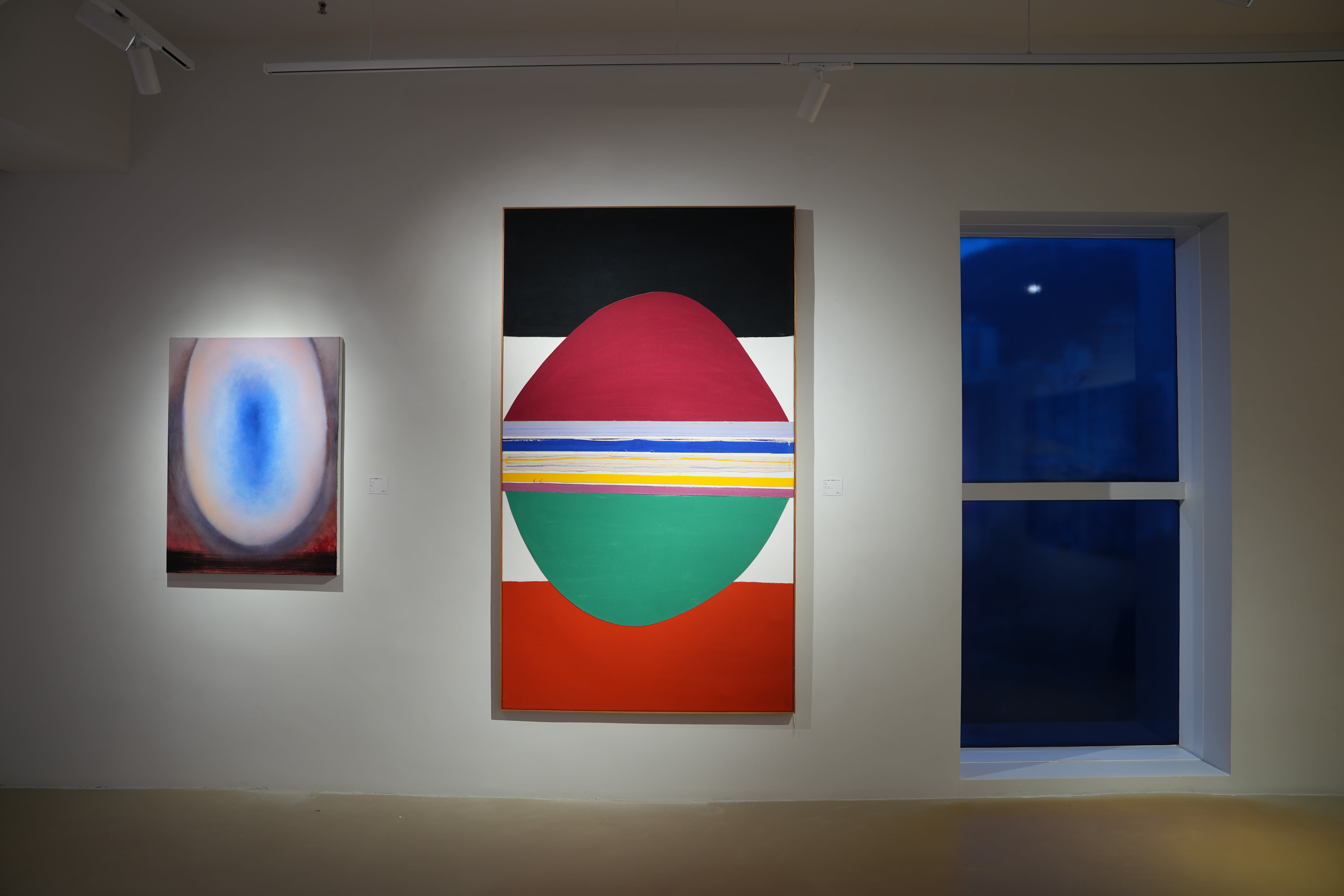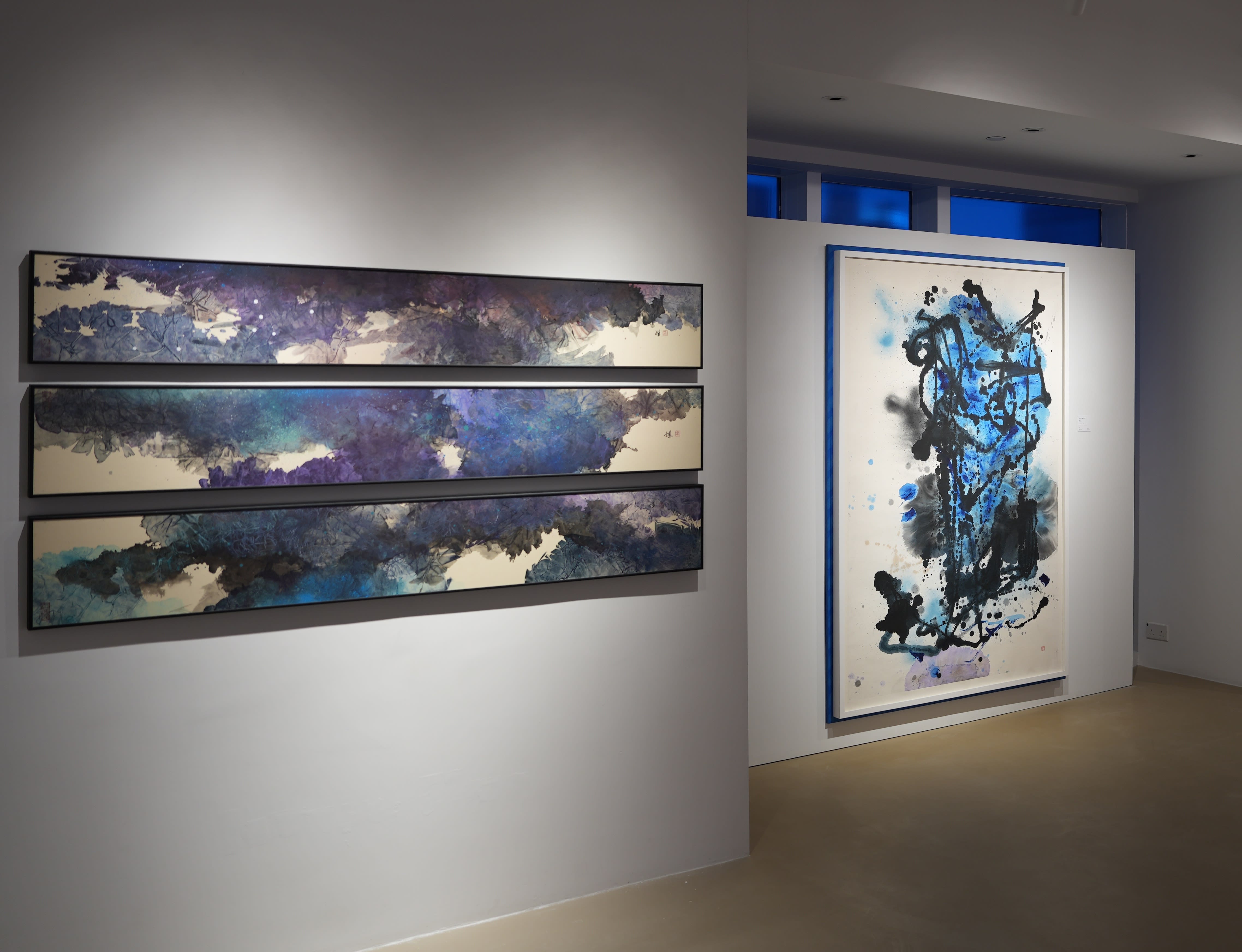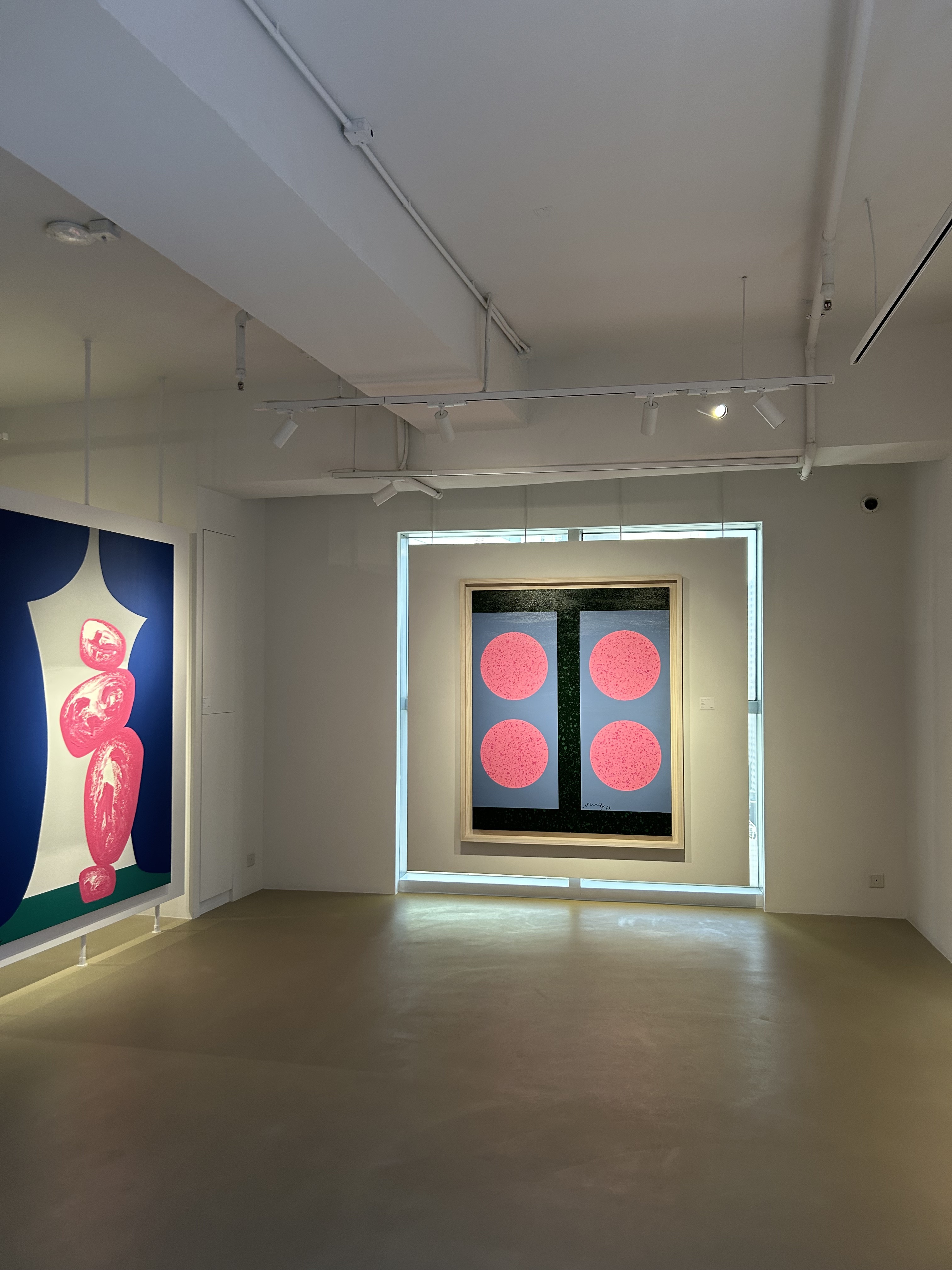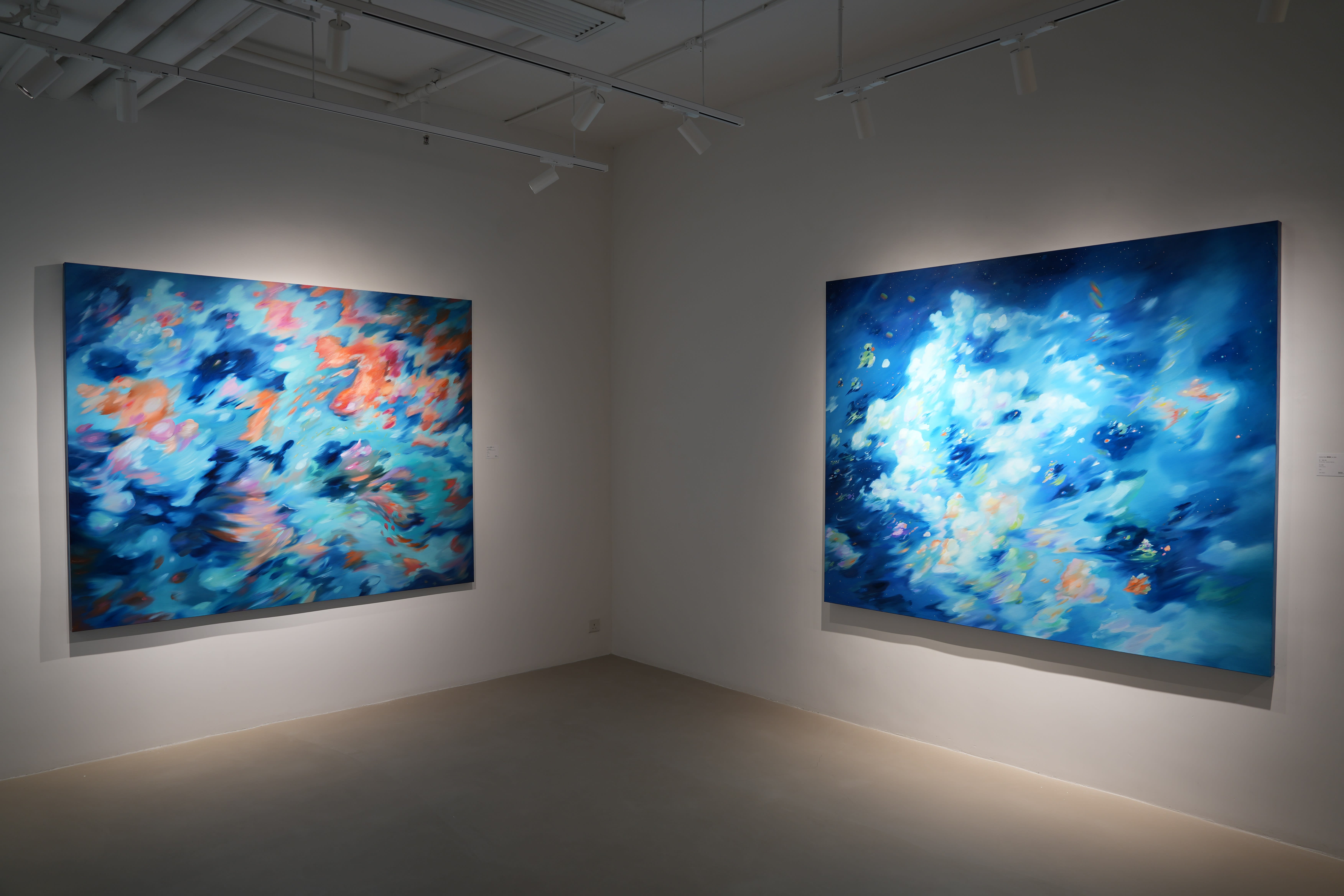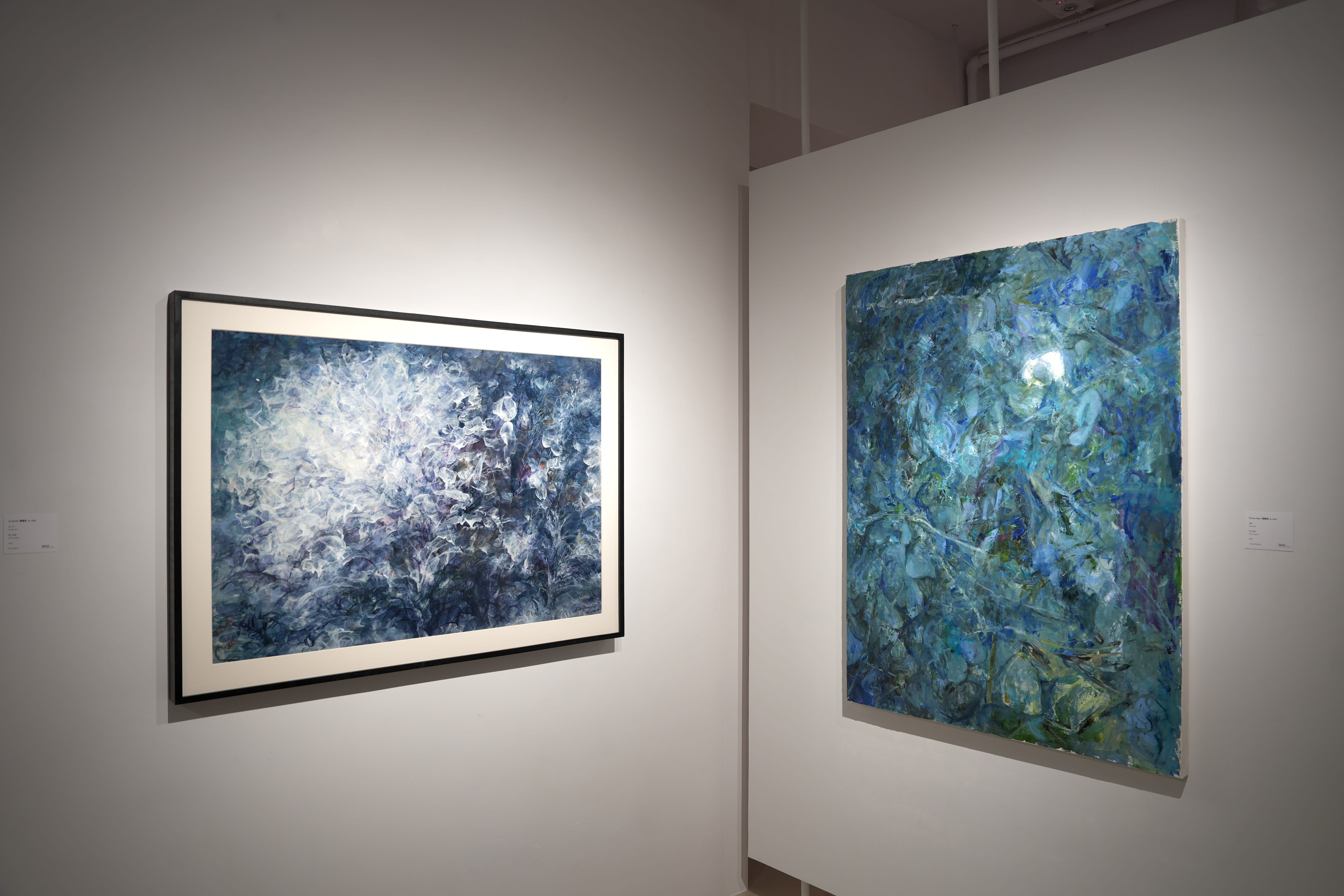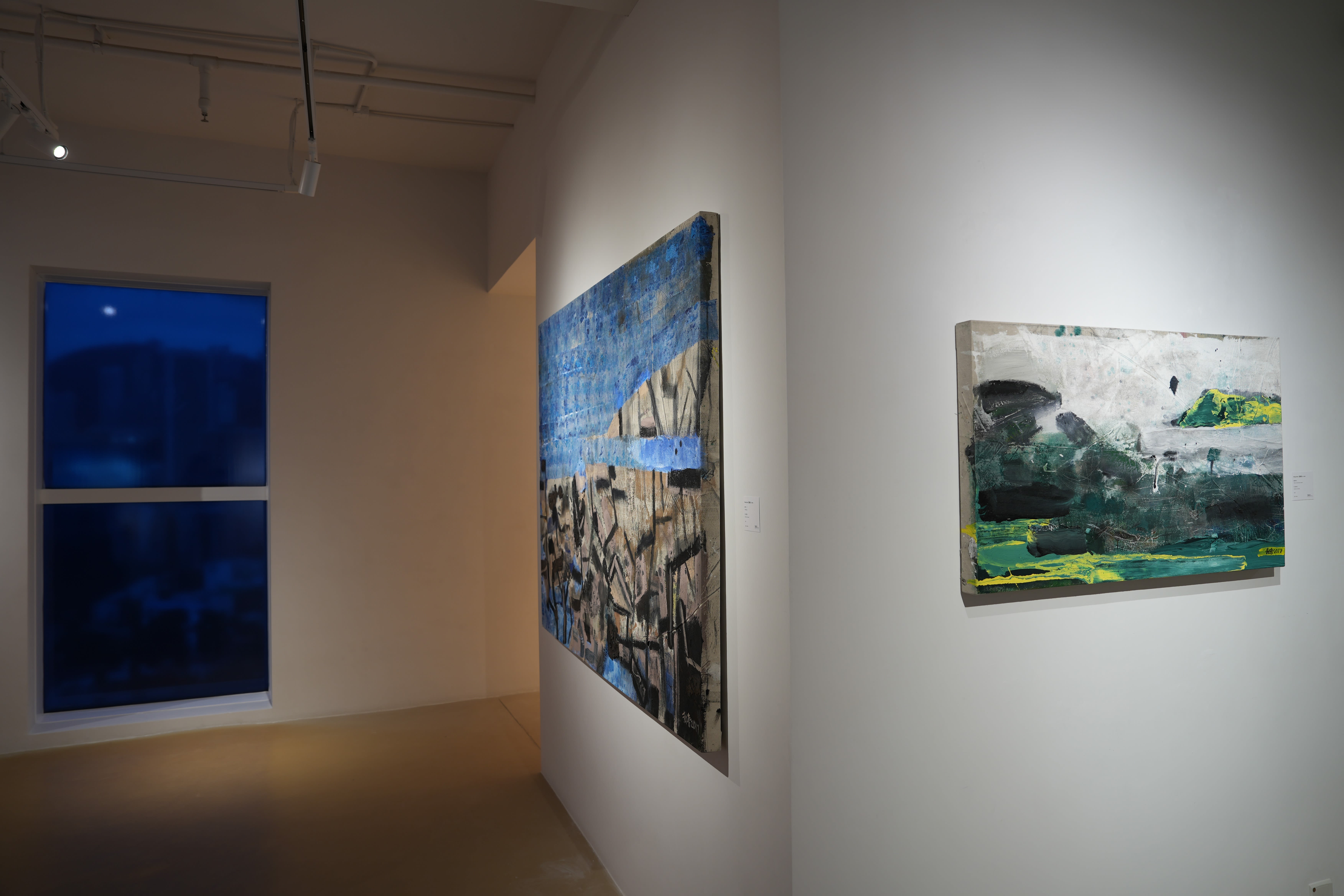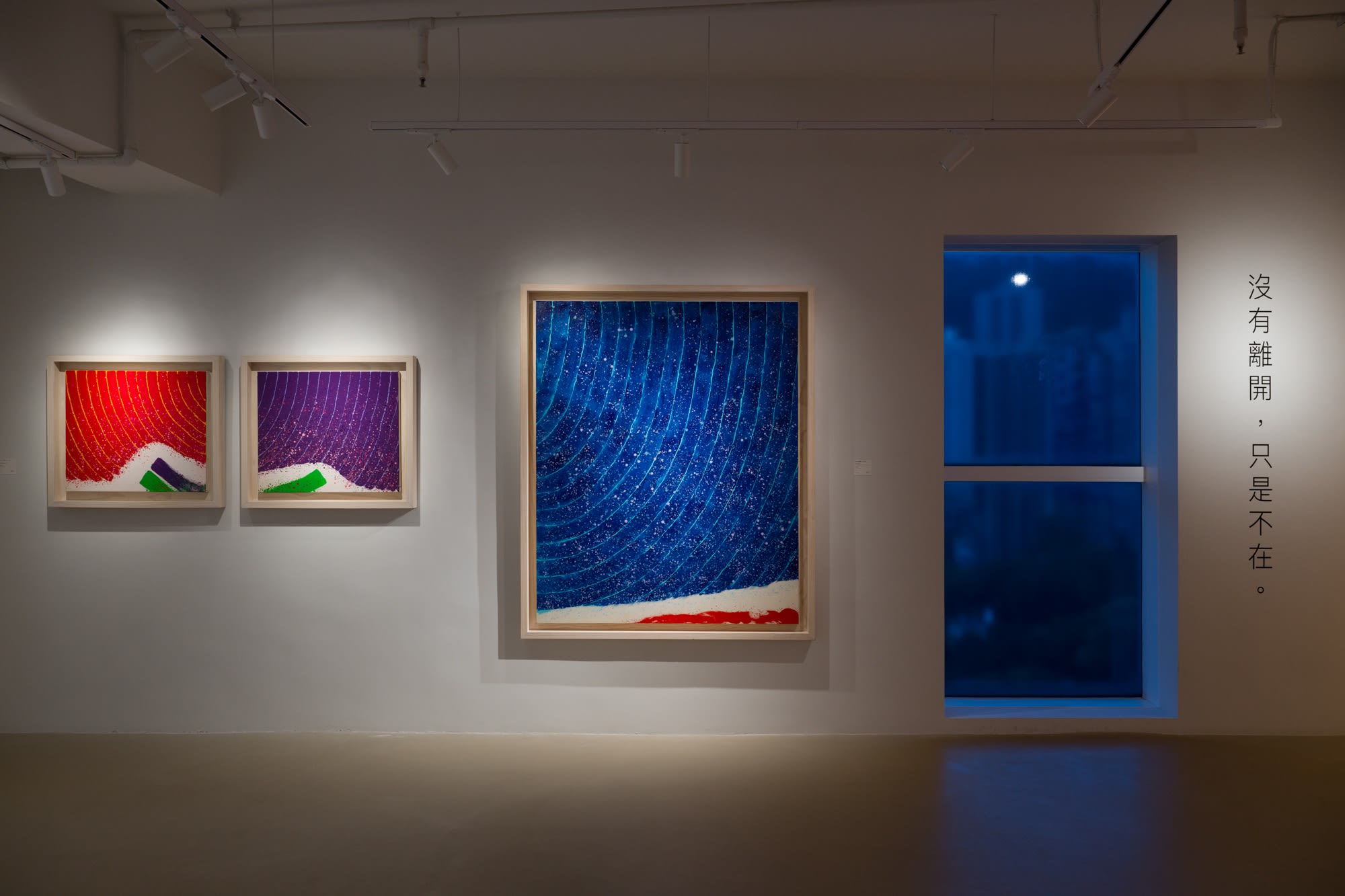
3812 Gallery’s current exhibition "Abstraction in Dialogue" aims to ignite a profound conversation between post-war Western abstraction and modern and contemporary interpretations of abstract art in the East. Through a carefully curated selection of artworks, this exhibition bridges artistic traditions across cultures and generations, encouraging viewers to explore the universal language of abstraction. This article introduces the artists featured in the exhibition, exploring their artistic inspirations, creative processes, and providing thoughtful descriptions and insights into their works.
Abstraction, in its purest form, is a dialogue—an exchange between the seen and the unseen, the artist and the world, the immediate and the eternal. It untethers us from the literal, freeing us to explore sensation, emotion, and thought through form and colour. “Abstraction in Dialogue” brings together 12 voices, who, though separated by time and space, share a profound conversation in abstraction.
Terry Frost & Natalie Cheng
(From left) Natalie Cheng, Corazón Vacío, 2024; Terry Frost, June Collage, 2002
“There is a freedom which is totally abstract, I'm not bound to do it, to try and do what I thought I saw; instead, I'm more inclined to do what I think I want to do about the situation.” – Terry Frost (1915 – 2003)
“In abstraction, I find a beautiful paradox. While each mark emerges from deeply personal, immediate moments, together they transcend time, speaking a language without beginning or end.” - Natalie Cheng (b.1992)
Frost’s signature circles and semicircles, rooted in the dramatic landscapes of St Ives, Cornwall, transform the natural world into bold expressions of rhythm and freedom. Cheng’s layered, luminous compositions explore the interplay of light and shadow, navigating the delicate space between human consciousness and the natural world. Both artists reject the constraints of figuration, embracing abstraction to evoke sensations that words cannot capture.
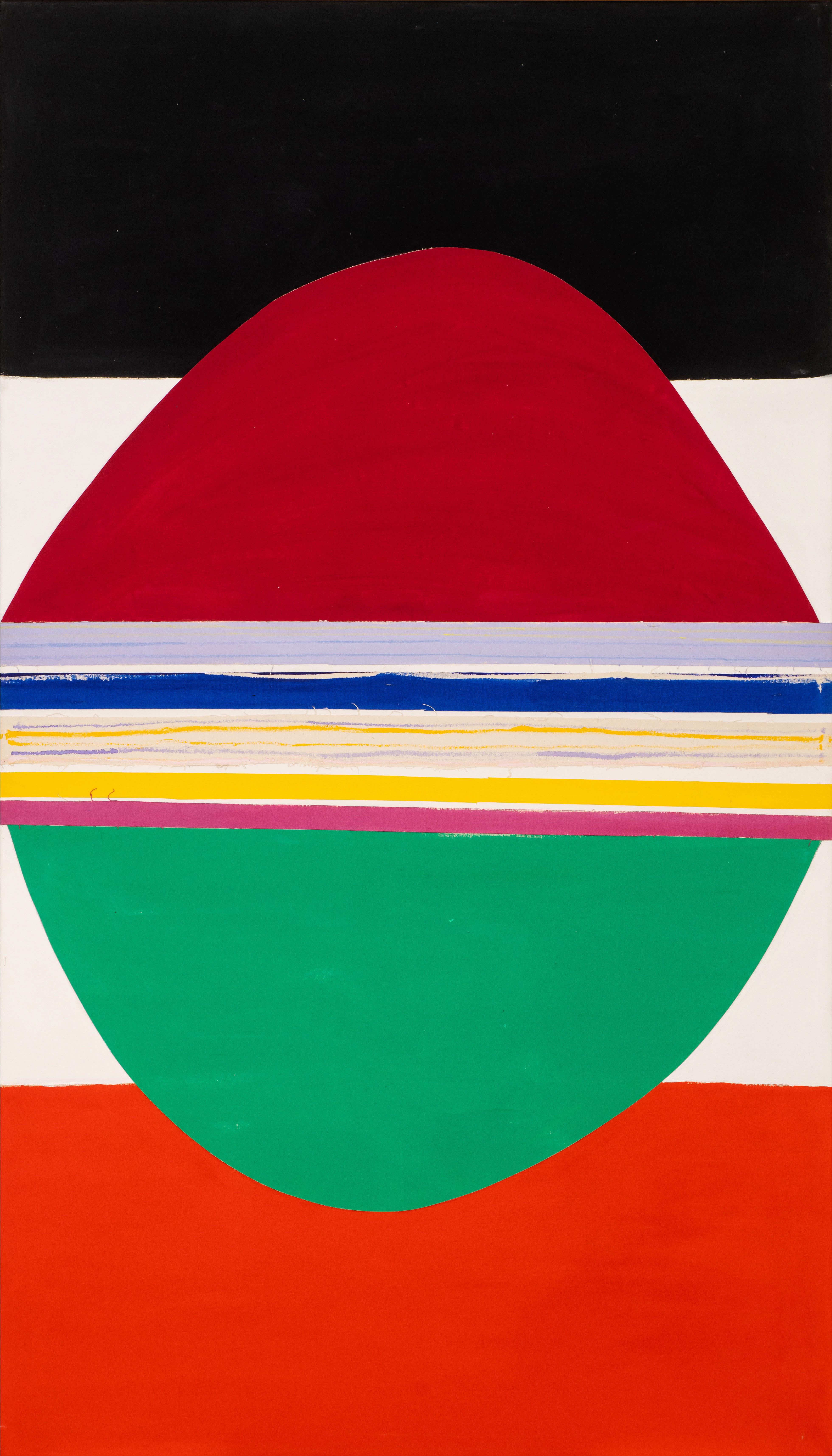
Terry Frost, June Collage, 2002
In June Collage (2002), Frost creates a striking tension between simplicity and complexity. A stark white slash cuts through fields of black and red, anchoring vibrant bands of colour that pulse with rhythm and energy. This playful yet deliberate balance of forms reflects Frost’s fascination with opposites—chaos and order, movement and stillness. By contrast, Cheng’s Corazón Vacío (2024) offers a dreamlike exploration of abstraction, where soft geometries and fluid layers blur the lines between reality and imagination. Her use of light and translucency amplifies the emotional resonance of her forms, transforming them into meditative portals that transcend physical boundaries.
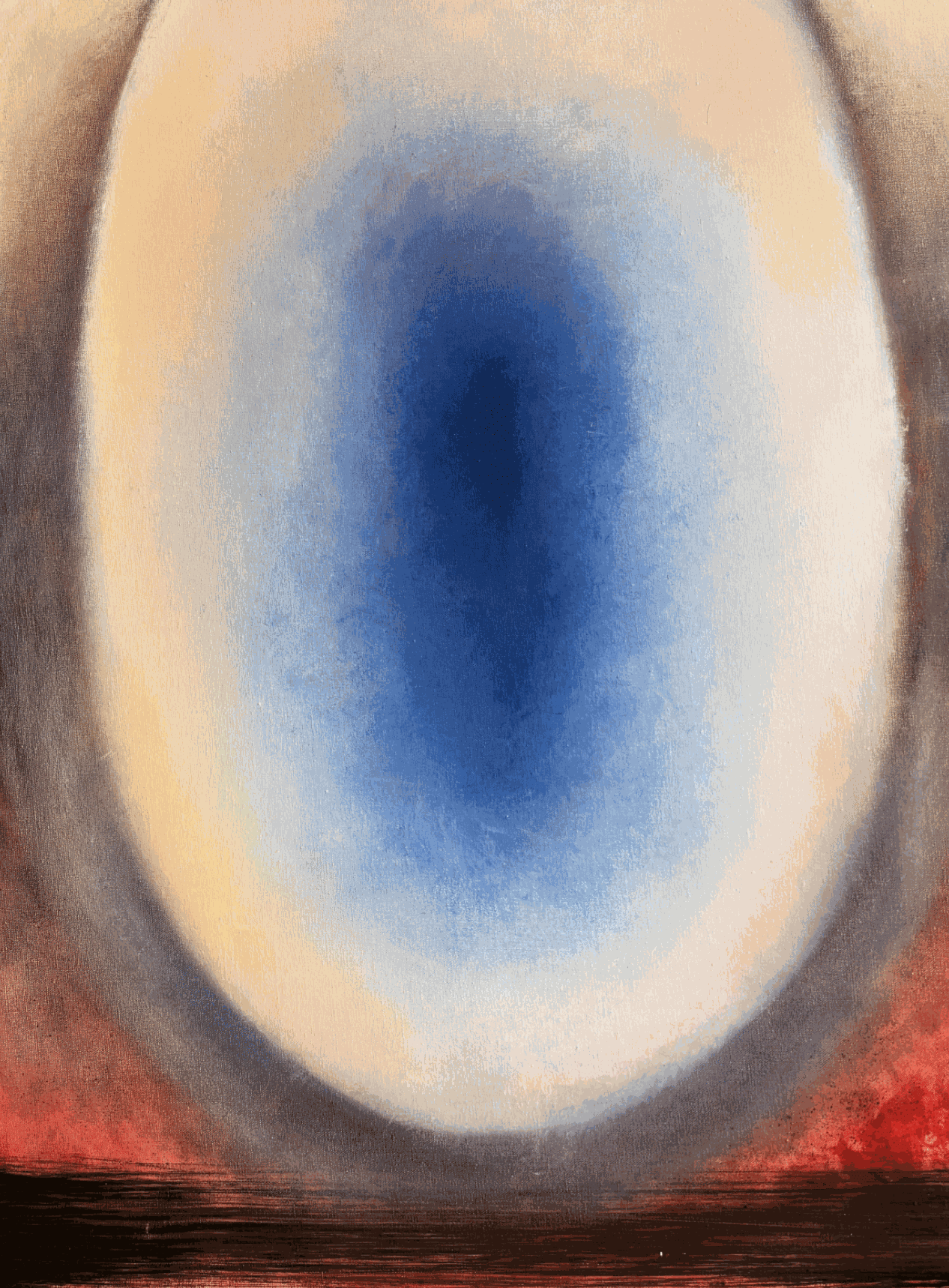
Natalie Cheng, Corazón Vacío, 2024
Placed in dialogue, Frost and Cheng reveal abstraction’s timeless capacity to bridge personal histories and universal truths. Frost’s bold, kinetic shapes, rooted in the physicality of the St Ives coastline, find an echo in Cheng’s ethereal, introspective shapes. Both artists use abstraction as a means to open space—space for feeling, reflection, and connection. Their works remind us that abstraction is not merely the absence of form but the presence of possibility: a boundless dialogue of freedom, emotion, and timeless resonance.
“My works are not landscapes of any particular location. Although viewers cannot see actual landscapes in my works, they are able to appreciate the landscape that changes with their emotions. Through abstraction, the works manifest the different worldview of each individual.” – Raymond Fung (b.1952)
“Figures, nature, and faces are rendered in different mediums, like our identities— reflective, fluid, disintegrating—becoming increasingly abstract as they sink beneath the surface.” – Chloe Ho (b.1987)
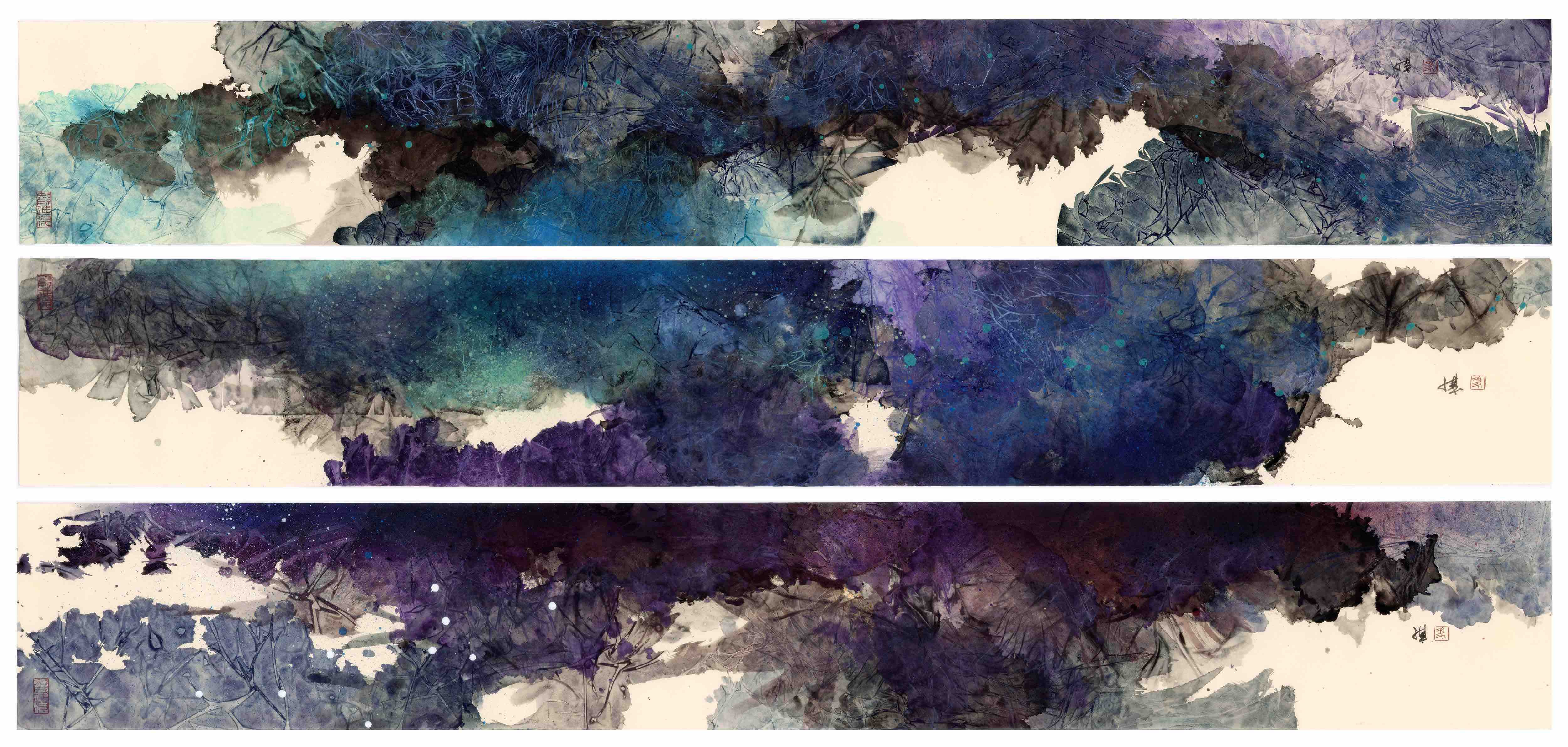
Raymond Fung, Breathing (24)(25)(26), 2021
Raymond Fung and Chloe Ho engage in a profound dialogue through the language of abstraction, transforming ink into a bridge between tradition and innovation. Fung’s “Breathing” series is a meditation on fragility and impermanence, where sweeping ink gestures are layered with air, pigment, and chance. Beneath clingfilm, pigments pool and disperse, creating atmospheric forms that evoke landscapes shaped by unseen forces. These works blur the boundaries between control and surrender, permanence and ephemerality, inviting viewers to reflect on the transient beauty of existence.
Chloe Ho, in contrast, wields ink as a vessel for identity and transformation. In Astral Vase (2019), flowing waves of blue and black ink dissolve into ambiguity, mirroring the fluidity of human experience. Her compositions, at once delicate and powerful, channel the energy of post-abstract expressionism while remaining rooted in the ancient spirit of ink. Through unpredictable movements and visceral marks, Ho reveals the impermanence and interconnectedness of life, where boundaries dissolve and individuality merges into universality.
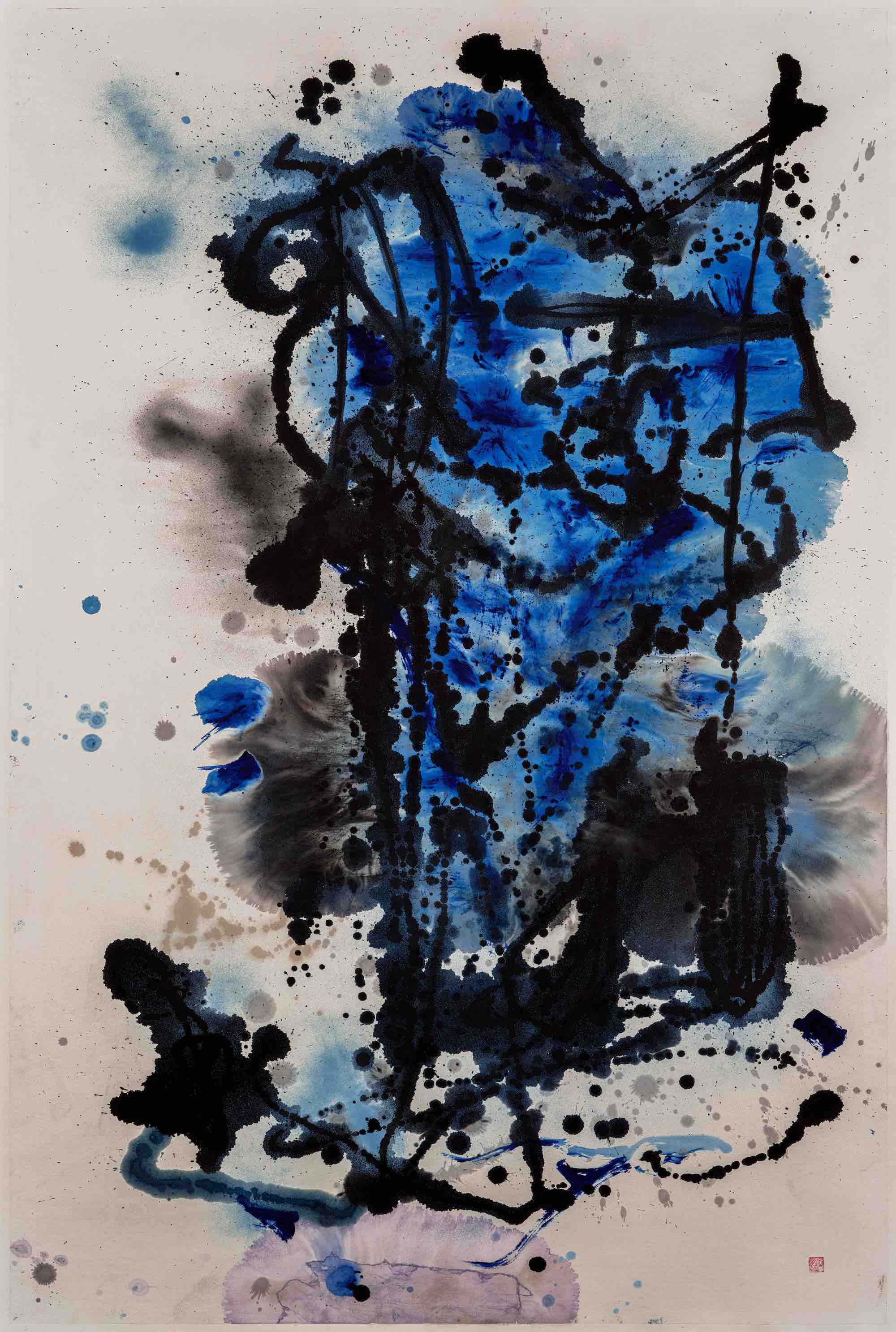
Chloe Ho, Astral Vase, 2019
Together, Fung and Ho weave a conversation between East and West, past and present, control and spontaneity. Through abstraction, their works transcend the literal, inviting viewers into a shared rhythm of introspection and discovery.
Ma Desheng & Hsiao Chin
(From left) Ma Desheng, The Precious, 2006; Hsiao Chin, Four Yuan-2, 1963
“Artistic creation does not necessarily have to be abstract, but it should help to establish our spiritual values... I am not a pure painter; my practice is spiritual research.” - Hsiao Chin (1935 – 2023)
“I wanted to explore a more expressive and abstract style that returns to the essence of art, aiming to create a completely new art phenomenon.” - Ma Desheng (b.1952)
Hsiao Chin and Ma Desheng transform abstraction into a meditation on existence, where shape, colour, and texture transcend their materiality to evoke spiritual and emotional resonance.
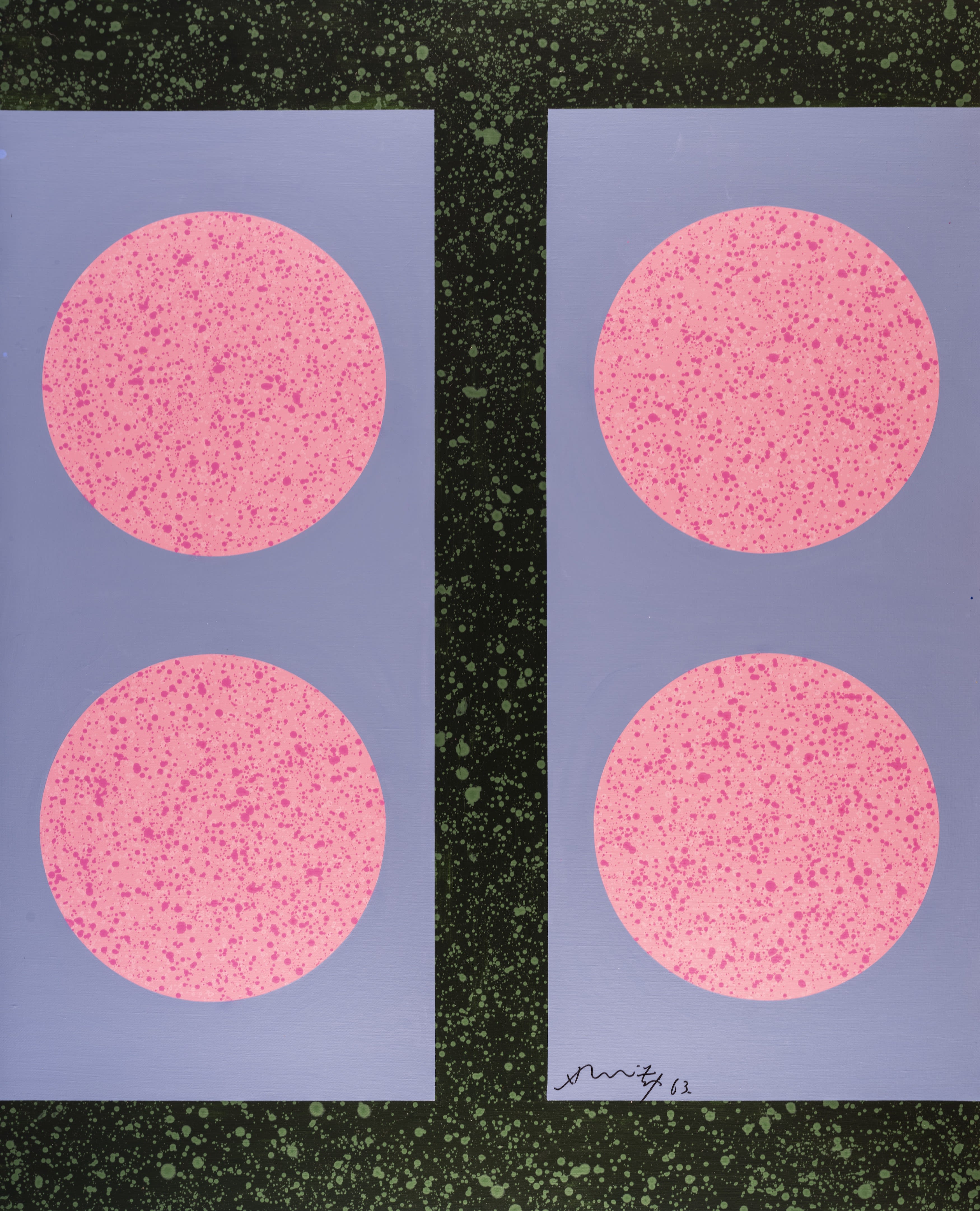
Hsiao Chin, Four Yuan-2, 1963
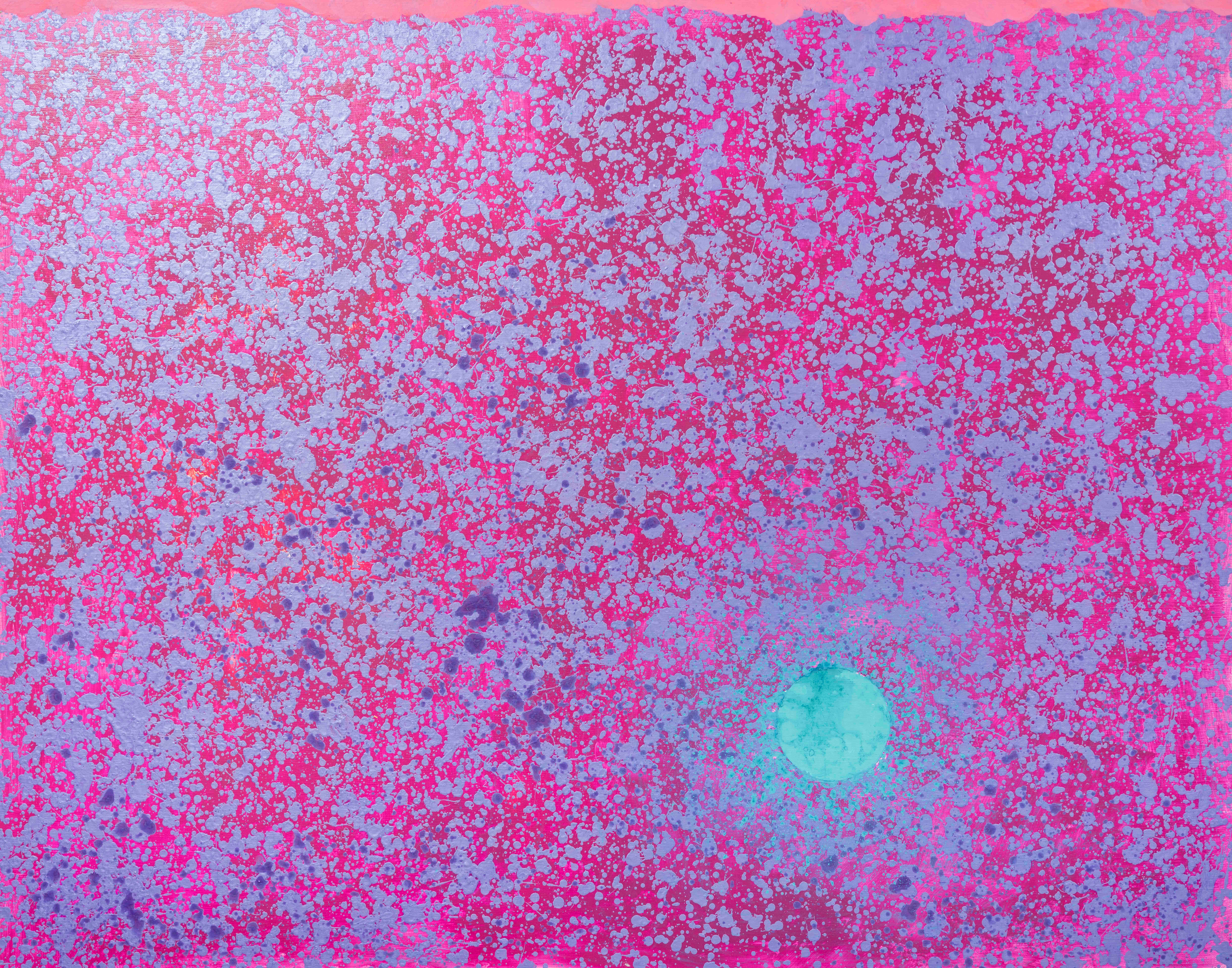
Hsiao Chin, Hope-2, 2021
For Hsiao, the point and the circle are cosmic symbols of unity and infinite energy. In works like Four Yuan-2 (1963), soft pink dots hover on a tranquil field of purple, balancing motion and stillness, while Hope-2 (2021) bursts with luminous blues and fiery pinks, capturing the dynamic forces of the universe with a quiet, celestial power.
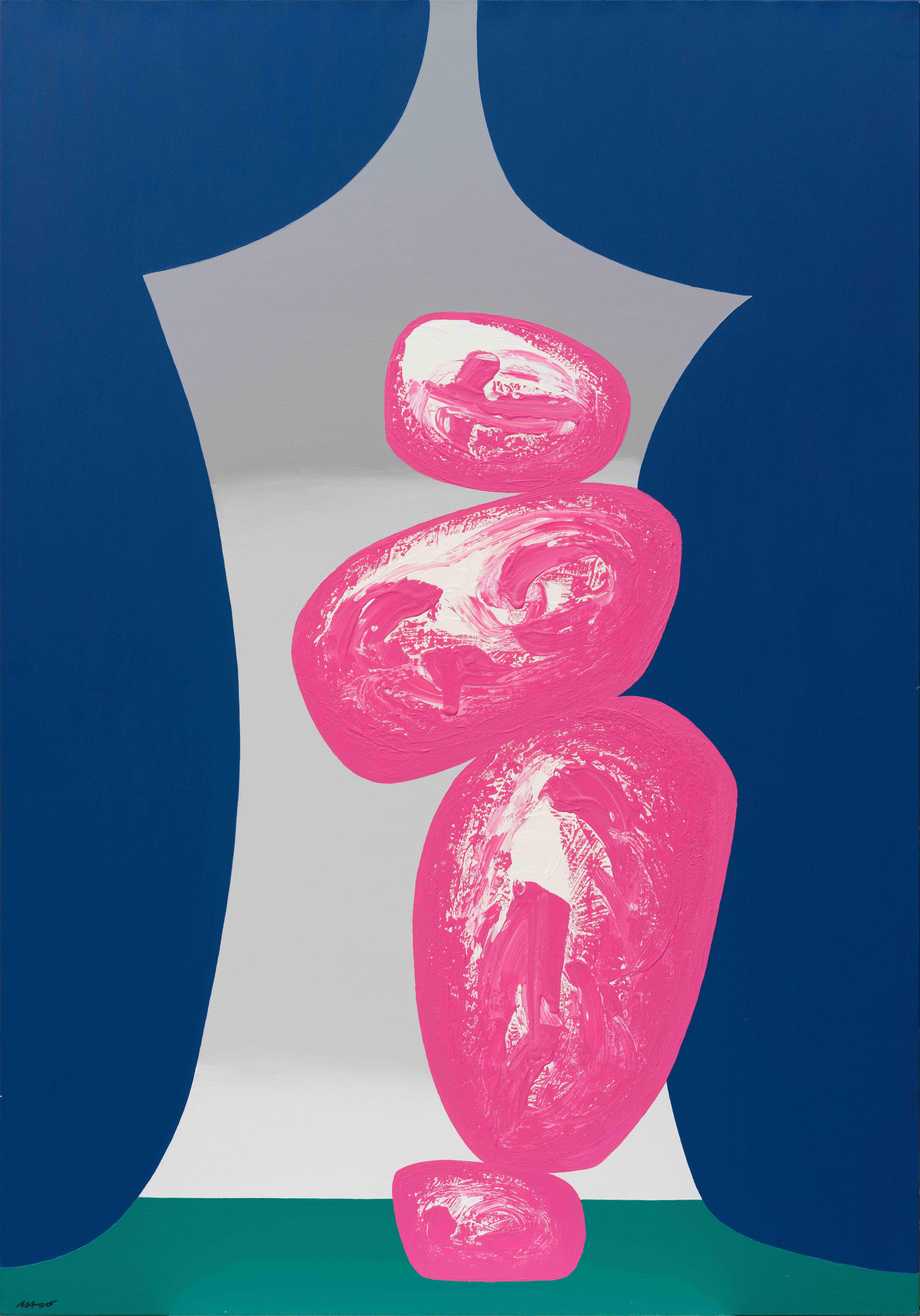
Ma Desheng, The Precious, 2006
Ma Desheng’s art, rooted in the symbolism of stone, reflects resilience and transformation. In The Precious (2006), human-like rock forms emerge textured with intricate patterns that recall traditional Chinese landscapes. The pink tones soften their strength, revealing a harmony of fragility and permanence, sensitivity and endurance. His stones are not static—they embody life, introspection, and the Taoist unity of humanity and nature, reminding us of the unseen energies that shape existence.
As two of the most celebrated figures in modern Chinese abstraction, Hsiao Chin and Ma Desheng push the boundaries of spiritual and artistic expression. Their works transcend cultural and temporal confines, offering viewers an intimate yet universal exploration of harmony, resilience, and the infinite. In their hands, abstraction becomes more than a visual language— it is a space for reflection, transformation, and timeless connection.
Joanne Chan & Kwan Yung Yee
(From left) Joanne Chan, On the way- Orchestral Tempest Sonata, and On the way - Stardust Odyssey, 2024
“Abstract art is a raw yet poetic revelation, embracing feelings that words cannot name, transcending language and time, continually advancing in the flowing hearts of people.” – Joanne Chan (b.1992)
“Abstraction enables me to see the unseen.” – Kwan Yung Yee (b.1991)
Joanne Chan and Kwan Yung Yee transform abstraction into a shared language of introspection and spirituality. Through their distinct yet complementary approaches, they explore the invisible forces that shape existence, crafting deeply personal works that resonate with universal truths. For both artists, abstraction transcends technique—it is a vessel for emotion, faith, and discovery, offering a glimpse into the unseen realms of the soul.
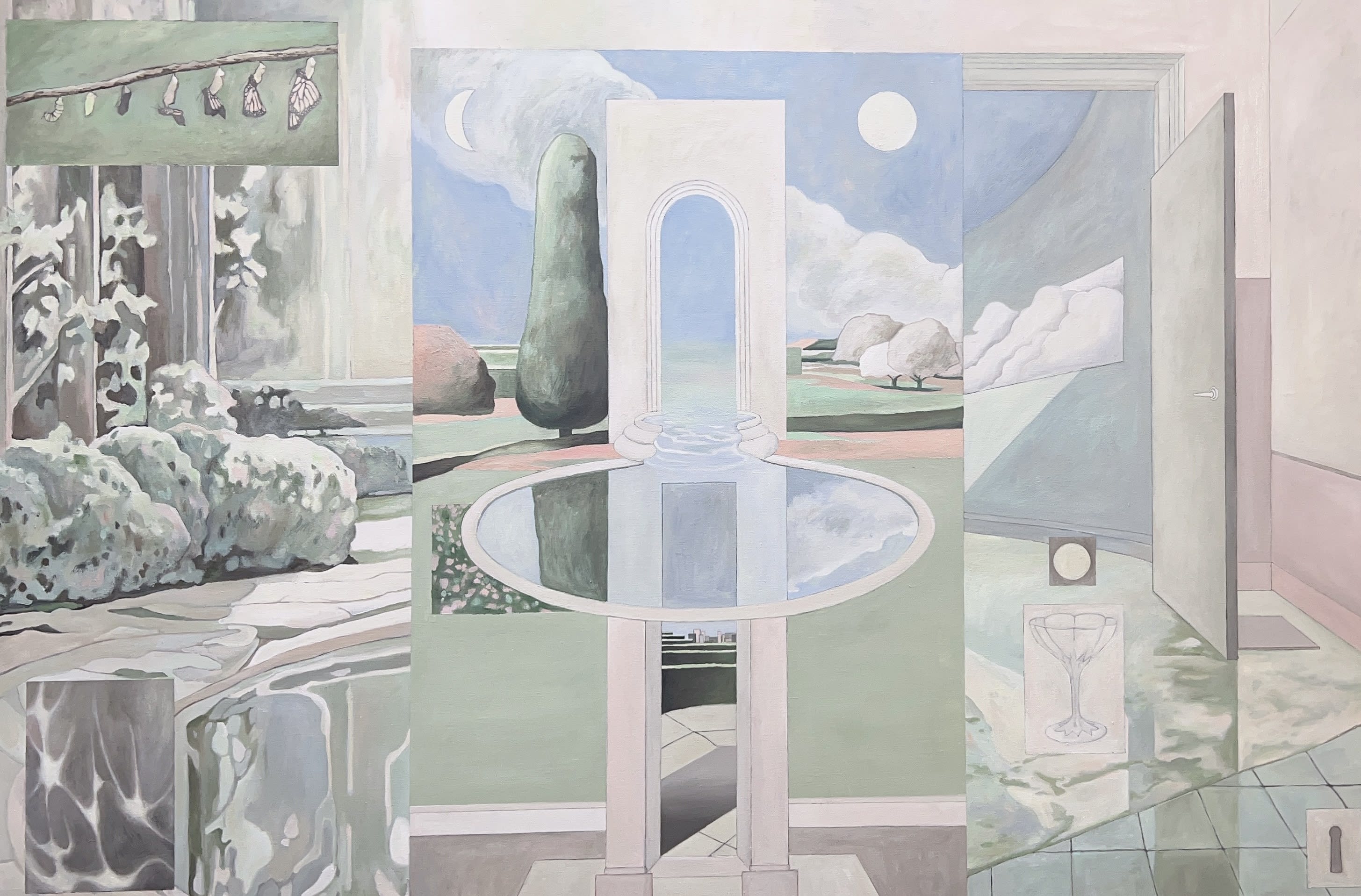
Kwan Yung Yee, How Lovely Is Your Dwelling Place, 2024
Kwan's art is a sanctuary, defined by bold forms, pastel tones, and a meticulous balance of graphic patterns and stylised natural elements. In How Lovely is Your Dwelling Place (2024), she conjures a serene refuge inspired by the Psalms, envisioning a celestial Eden where divine grace overflows. Her soft, flowing palette of pinks and greens imbues the piece with an ethereal luminosity, inviting viewers to dwell in a space of tranquillity and protection. Kwan’s precise compositions transform spiritual reflection into visual poetry, blurring the boundaries between faith, imagination, and the natural world.
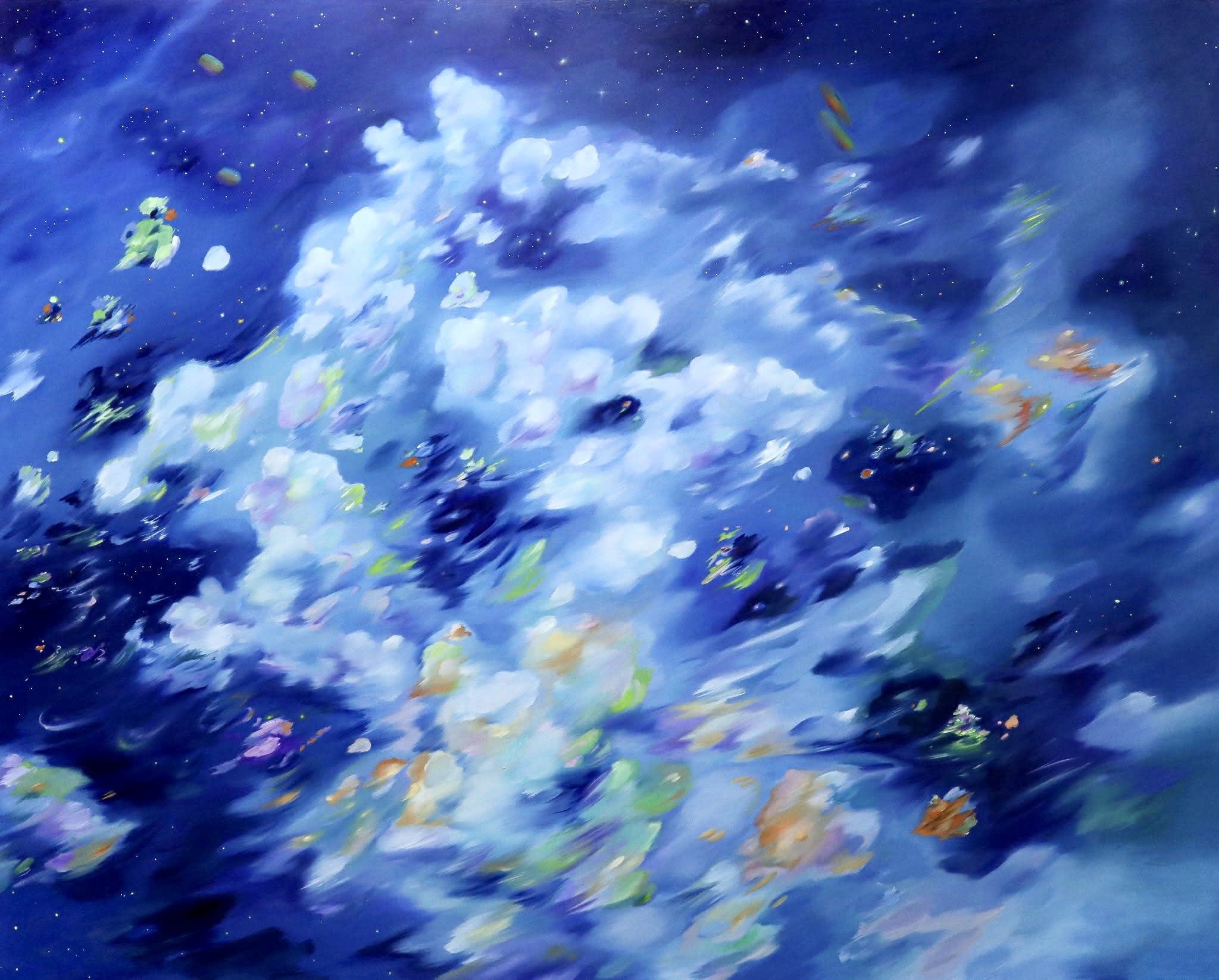
Joanne Chan, On the way - Stardust Odyssey, 2024
Joanne Chan, on the other hand, channels abstraction as a mirror to fleeting emotions and impermanent connections. In her series “On the Way” vibrant brushstrokes and cosmic swirls evoke the ever-shifting rhythms of life. On the Way – Stardust Odyssey (2024) bursts with energy, its greens, oranges, and purples weaving a mystical celebration of transformation. Her fluid gestures, at once raw and celebratory, capture the transitions between love and grief, joy and sorrow. For Chan, abstraction is not only a reflection of her spiritual practice but also a meditation on human connection—ephemeral, yet profoundly meaningful.
Through their art, Chan and Kwan expand abstraction into a meditative space, where the boundaries of faith, emotion, and transcendence dissolve. Their works remind us that abstraction is not merely a departure from the tangible, but a return to the essence of feeling— a raw and poetic revelation that lingers long after the eyes have left the canvas.
Liu Guofu & Thomas Ngan
(From left) Liu Guofu, Flower Z-3, 2024; Thomas Ngan, Nocturne, 2024
“Important art aims to establish a meaningful, non-representational, idealized state that maintains distance from reality. Only in abstract form and construction can the weight of such an intangible state be borne.” — Liu Guofu (b. 1964)
“Abstract is the world before you recognize it, and the world after you understand it.” — Thomas Ngan (b. 1995)
Liu Guofu and Thomas Ngan approach abstraction as a poetic exploration of the ephemeral, where light, air, and nature take on a delicate, almost spiritual presence. Both artists share a fascination with the transparency and transience of the world, using flowers, leaves, and natural forms as symbols of impermanence and transformation.
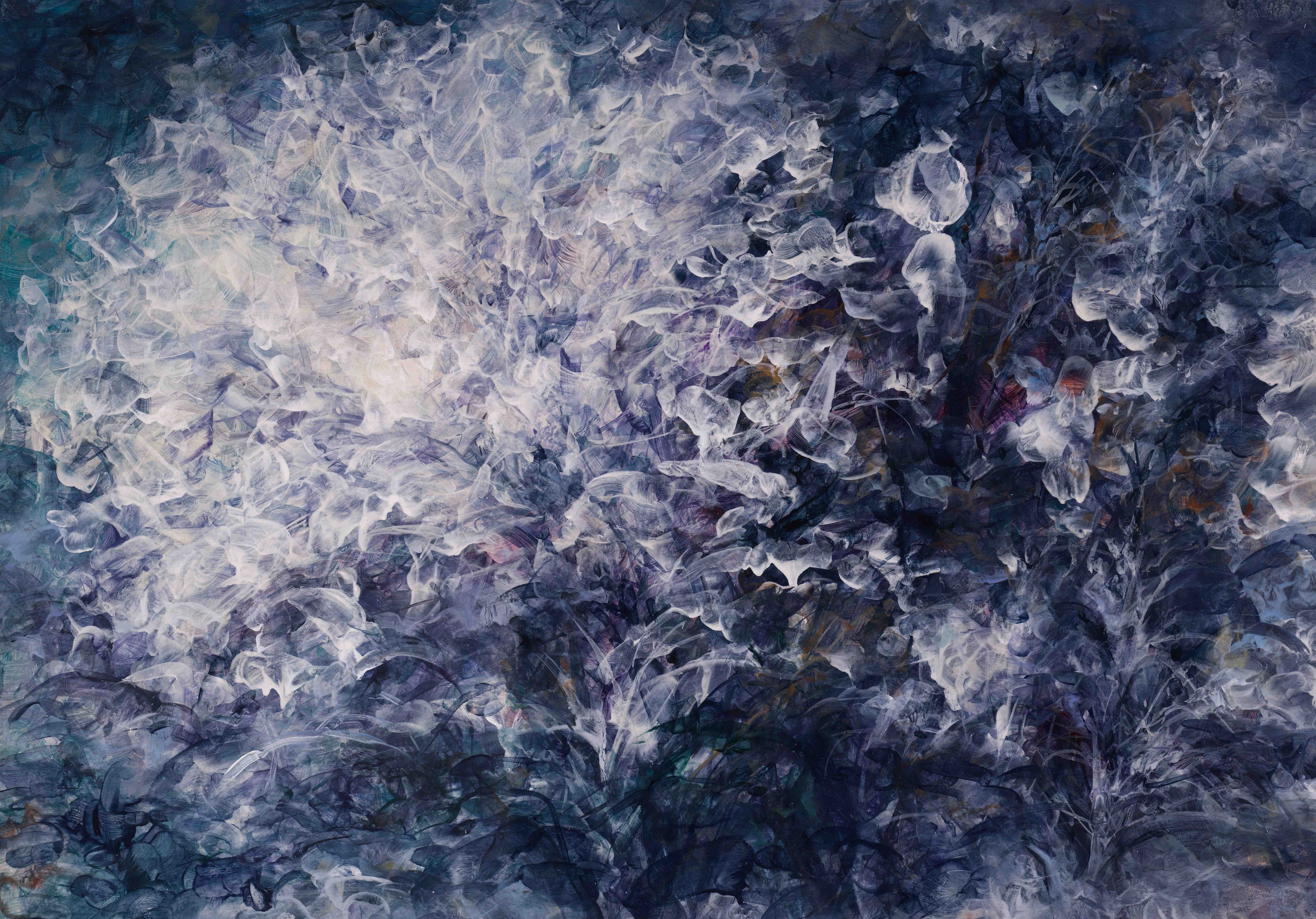
Liu Guofu, Flower Z-3, 2024
Liu’s Flower Z-3 (2024) reflects the quiet elegance of Daoist philosophy, where pigments flow organically across the surface, guided by chance yet imbued with intention. His petals, rendered in soft purples and hazy whites, dissolve into an atmosphere of meditative stillness, balancing chaos and tranquillity in a way that feels both expansive and intimate. The work captures the fleeting beauty of life, inviting viewers into a realm of introspection and calm.
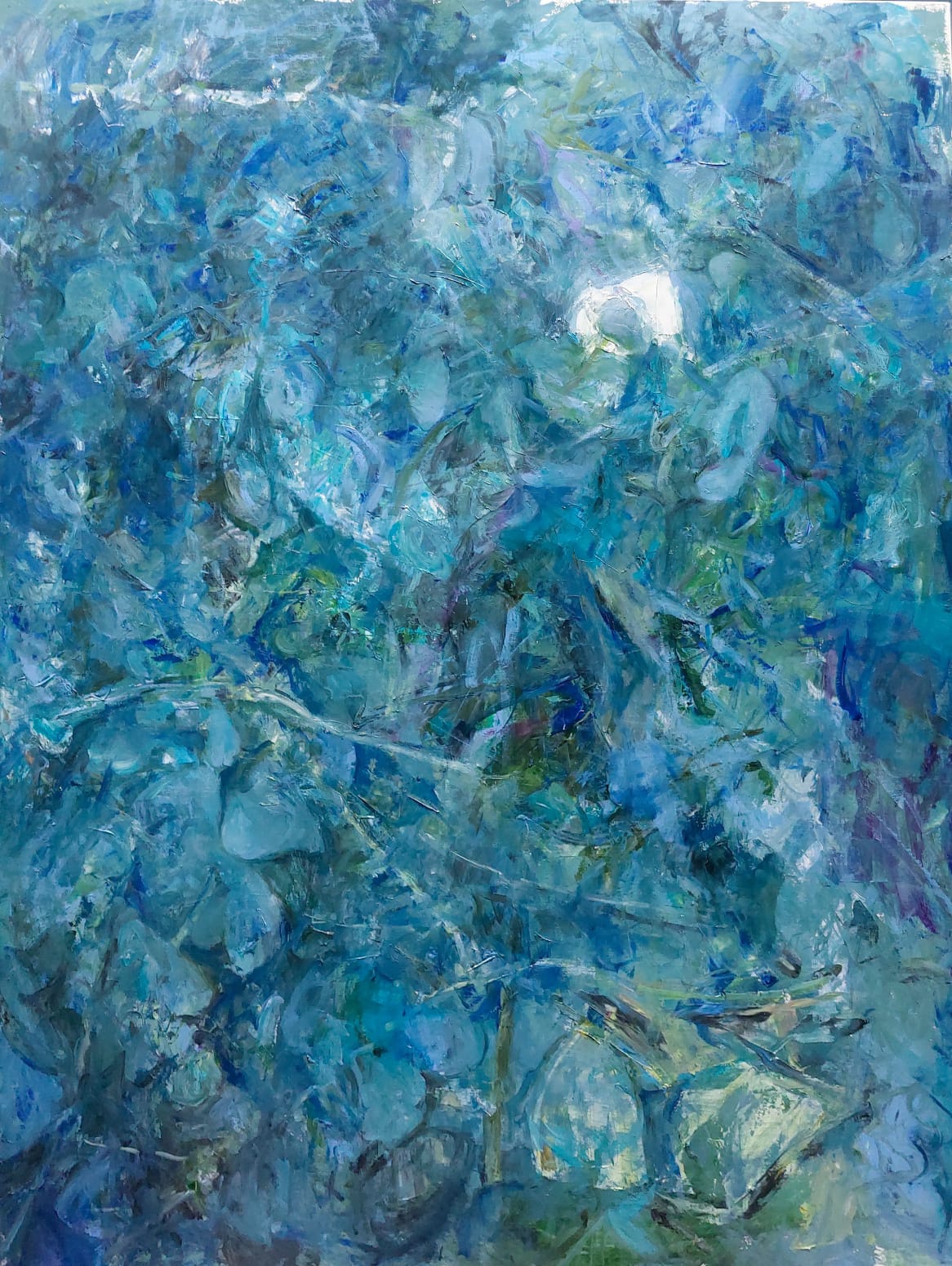
Thomas Ngan, Nocturne, 2024
Ngan’s Nocturne (2024) explores the interplay of light and shadow, where nocturnal blues and subtle illuminations create a quiet tension between order and spontaneity. Inspired by traditional watercolor techniques, Ngan allows the paint to speak for itself, embracing unpredictability as a source of harmony. The delicate glow of flowers breaking through darkness evokes raw emotion, bridging the gap between control and surrender.
Through abstraction, Liu and Ngan craft a shared dialogue about the impermanence of existence. Their works, though stylistically distinct, resonate with the same ethereal quality, inviting us to reflect on the fragile beauty of the natural world and the fleeting moments that define it.
Wang Jieyin & Liu Yangwen
(From left) Wang Jieyin, Dwelling 2; and Time on the Green Island, 2017
“When I face the blank canvas, I begin by laying some colours at random, and then “cross the river by feeling the stones,” so to speak, taking one step at a time. It is like chess.” – Wang Jieyin (b.1941)
“Art can’t be spared from abstraction. Profound images come from one’s own unique language symbol. and if one doesn’t simplify the objects on the premise of pursuing a deep artistic language, one would only achieve superficial formalist paintings.” - Liu Yangwen (b.1995)
Wang Jieyin and Liu Yangwen reshape the natural world through abstraction, creating bold, evocative compositions that defy traditional depictions of softness and delicacy in nature. Both artists embrace the untamed energy of graffiti-like brushstrokes, infusing their works with a raw vitality and a confident sense of motion. Their shared vision transforms mountains, seas, and flowers into dynamic forms, where nature becomes a realm of tension, power, and reinvention.
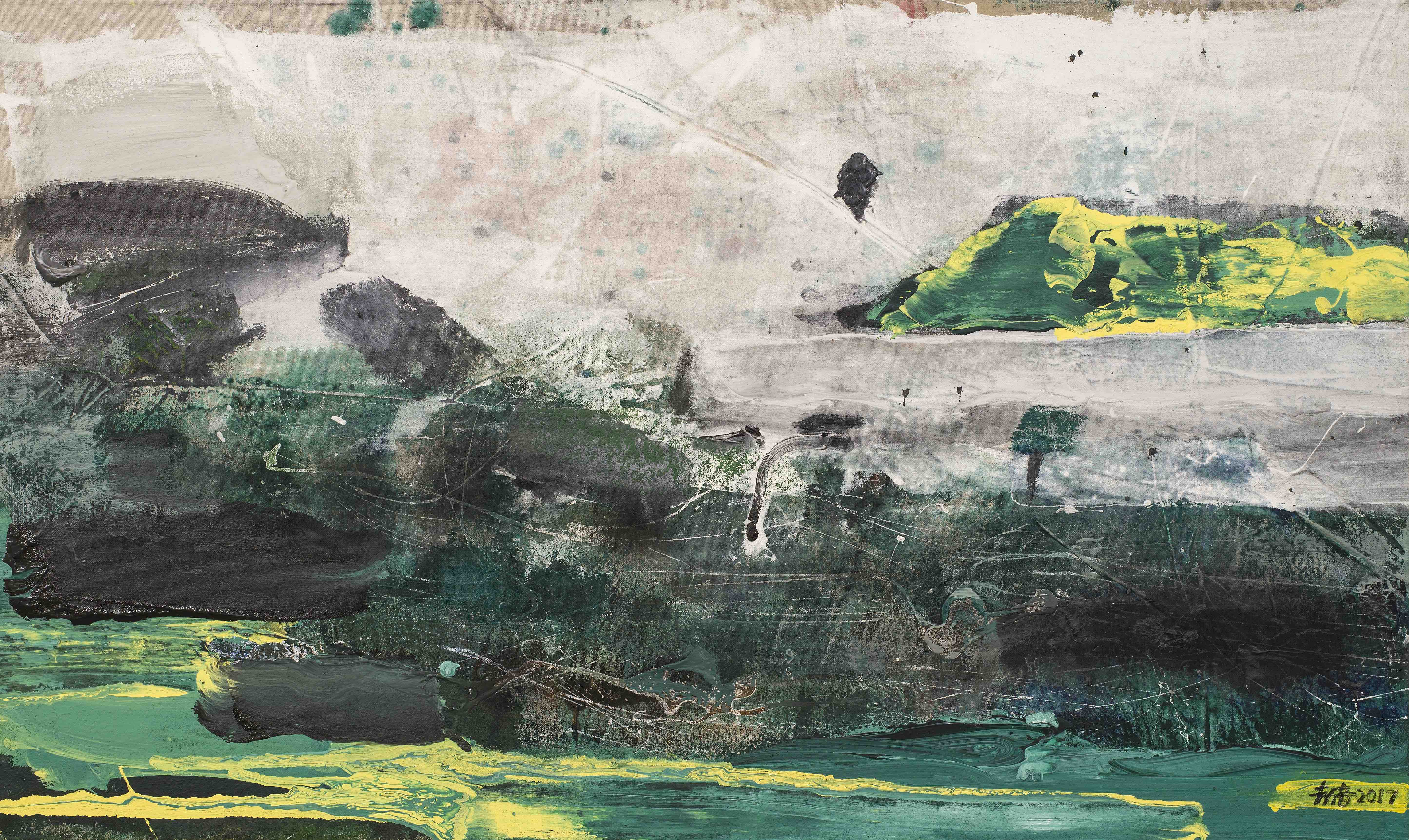
Wang Jieyin, Time on the Green Island, 2017
In Time on the Green Island (2017), Wang Jieyin’s sweeping, improvisational strokes evoke both the spontaneity of modern abstraction and the poetic structure of classical Chinese landscapes. The vibrant greens and yellows pulse with life, while his energetic gestures bridge tradition and modernity, offering a contemporary meditation on nature’s rhythms. Wang’s art celebrates uncertainty, his brushstrokes creating a dialogue between chaos and harmony.
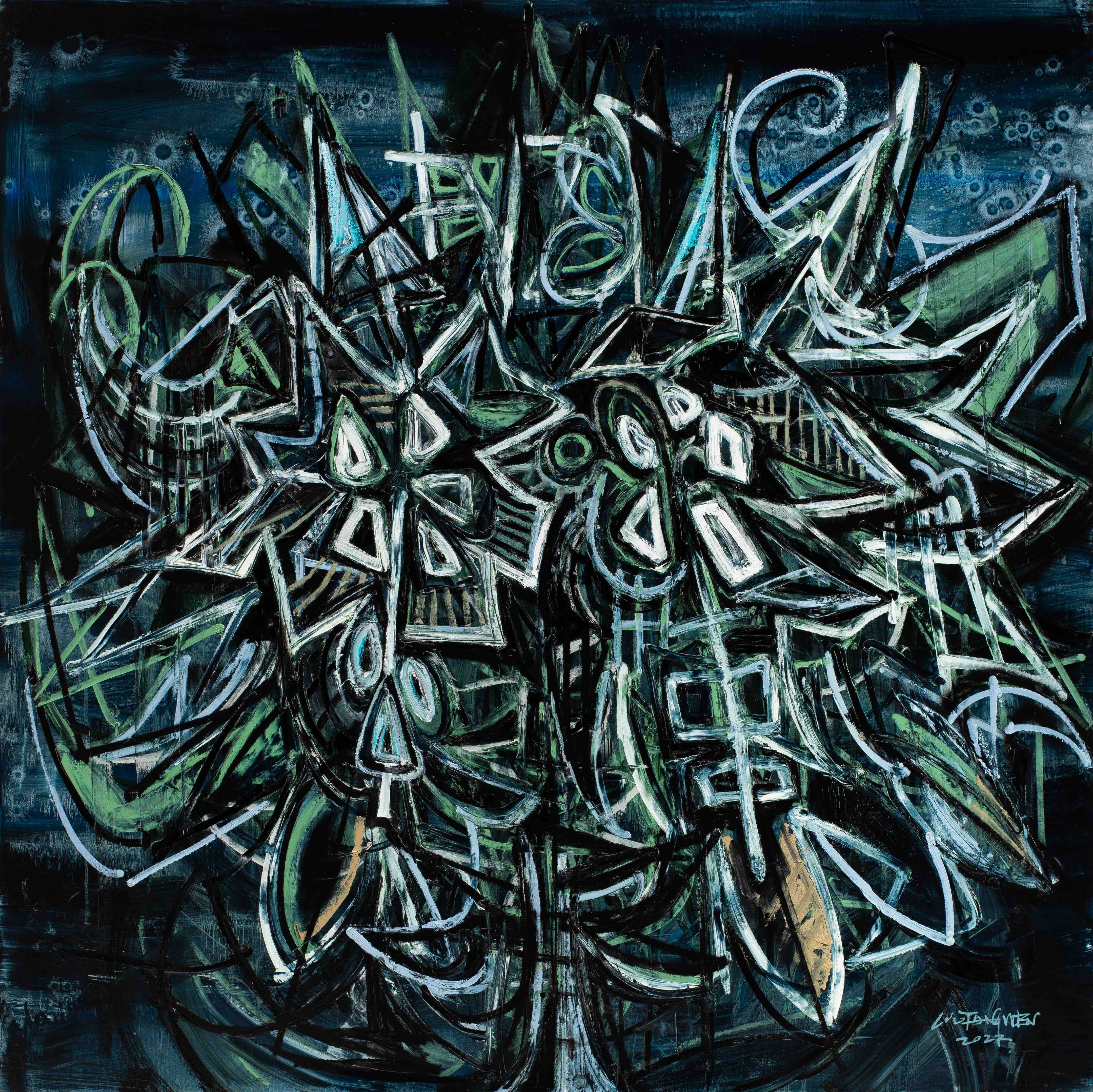
Liu Yangwen , Crown Imperial, 2022
Liu Yangwen’s Crown Imperial (2022) takes abstraction further, reimagining flowers as jagged, weapon-like forms in cool greens and blacks. The angular, fractured shapes unfold with fluid grace, challenging perceptions of fragility and sensuality. Liu’s work, rooted in destruction and reconstruction, invites viewers to see beyond the familiar, transforming flowers into surreal, fragmented entities that carry the weight of both tension and beauty.
Together, through their bold, dynamic approaches, Wang and Liu engage in a compelling dialogue about the sensuality and power of nature. Their works reject softness, embracing abstraction as a means of capturing the raw, untamed spirit of the natural world with confidence and vitality.
